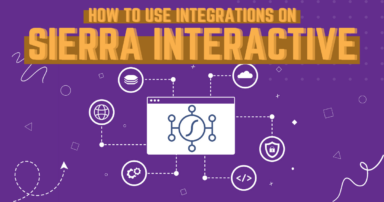Real estate content strategies are crucial for serving potential buyers’ needs. Understanding the different stages of the buyer’s journey and tailoring your content to meet the needs of potential clients at each stage can make all the difference in attracting and converting leads. In this article, we will explore the importance of aligning your real estate content with the buyer’s journey, and provide actionable tips and strategies to help you create effective content that engages and converts your target audience.
Defining The Buyer’s Journey in Real Estate
Defining the buyer’s journey is crucial to real estate content strategy. By understanding and recognizing the various motivations of buyers, content strategists can create tailored messaging to best suit their needs throughout each phase of the purchase process.
Real estate buyers typically move through four distinct stages:
- Awareness: During the awareness stage, potential customers become aware of your property or brand for the first time; this could be due to an online advertisement, word-of-mouth referral from friends/family, etc.
- Consideration: The consideration stage involves researching further into what you have to offer to determine whether it meets their requirements while also weighing up any alternatives they may find elsewhere.
- Decision: In the decision stage, buyers compare different offerings one last time before making a final choice on which option is right for them.
- Action: Finally comes the action stage, where buyers are ready to take decisive steps towards completing the purchase transaction and finally becoming your client.
Identifying Your Target Audience
Content marketing for real estate buyers is ineffective without properly identifying the target audience. The first step in aligning content with the buyer’s journey begins by understanding who the buyer is and what motivates them to purchase a property. Audience segmentation can help determine which segments of potential customers have specific needs, interests, or preferences when searching for a home.
Real estate professionals should also consider their prospective customer’s search process, such as online research methods, preferred information sources, and communication channels that appeal most to their target market. Understanding these factors will better equip agents to create relatable content that resonates with each individual buyer’s journey. By adapting content strategies based on customer demographics, psychographics, and other relevant data insights, real estate marketers can effectively tailor messaging.
Crafting Relevant Content
Once you know who you’re creating content for, you can start planning what content to create. Content relevancy is key to optimizing the user experience and increasing website engagement. This can be achieved by understanding how buyers search for real estate online, and crafting content that answers questions they may have throughout every stage of their search.
For example, if your real estate blog includes information about the neighborhoods you work in, you’ll want to keep audiences at different stages of the journey in mind depending on the topic.
At the top of the funnel, you’ll find potential buyers who aren’t sure of where they want to move and need to be convinced that your location should be their choice. You might write about local amenities or attractions to catch their interest and make them aware that your location is an option. A light touch can introduce your brand without turning off potential clients.
For buyers who are decided on where to move, but are in the consideration stage and comparing different areas, you might cater to their needs with comparison guides for different neighborhoods you work in. In these more focused content pieces, you can nudge buyers on to the decision and action stages by including links to listings pages and calls to action with your contact information.
Use your website’s user behavior analytics to help identify where users drop off in their journeys so you can make adjustments. Your content should be organized and structured to ensure a smooth transition through each step of the buying process.
Optimizing Content For SEO
Once a content strategy is in place, the next step is optimizing it for SEO. Real estate professionals should be aware of how to make sure their website pages show up in search engine results pages (SERPs). After all, having great content that no one can find serves little purpose.
Search engines like Google rank websites based on various factors such as keyword usage, meta descriptions, title tags, and more. To create an effective real estate SEO campaign, marketers need to incorporate targeted keywords into titles and headings as well as spread them throughout the body copy. Additionally, they must also include relevant images with proper alt text so that search engine crawlers can read their page properly and accurately index it against user queries.
However, there’s more to SEO than writing for search engines. On the human side, crafting powerful headlines that grab attention together with using bulleted lists help keep users engaged longer on webpages, which further improves SERP rankings over time.
Content optimization isn’t just about stuffing keywords; rather, it’s about creating valuable information that appeals to readers while at the same time employing key phrases strategically within the context of the post. Content marketing strategies should always focus on providing useful knowledge to prospects instead of pushing products or services solely for commercial purposes—Google, for one, makes an effort to rank people-first content higher on search engine results.
Getting Your Content To Your Audience
This goes back to identifying your target audience. You need to make sure your relevant, optimized content is visible where your target audience looks for information. This could mean leveraging social media networks where your target audience is active. It can also mean submitting articles to real estate-specific directories or publications.
In addition, no content marketing strategy is complete without a plan for engaging with the audience once they’ve seen your content. While you may have convinced them that your location should be their choice, you also need to keep in mind that buyers may have questions or want more information about a certain neighborhood or house. Responding to these inquiries promptly and professionally helps build trust with potential clients, further increasing the chances of generating leads from your content marketing efforts.
Analyzing Performance And Making Adjustments
Real estate analytics can measure engagement, leads generated, and other metrics after you produce and present your content. These analytics can provide valuable insight into which type of content resonates most with buyers and what areas require improvement or optimization.
Continually adjust your strategy based on these findings to ensure that you can successfully meet all aspects of the buyer’s journey. This could involve making changes such as optimizing existing pages or creating new ones, updating page titles or descriptions, improving CTAs (calls-to-action), increasing outreach efforts via social media, etc. Content optimization must be done regularly so marketers stay ahead of trends and have relevant information available for buyers throughout their entire journey.
Frequently Asked Questions
What Specific Channels Should I Use To Reach My Target Audience?
You’re likely to discover this once you’ve identified your ideal target audience. There are plenty of studies out there analyzing demographic trends in how people consume information, what social media platform they use the most, and more.
When it comes to targeting potential buyers with messaging tailored to their needs, social media is often considered the go-to channel. However, this should be part of a larger mix that also includes options such as personalizing emails to each customer, writing engaging blog posts and optimizing them for SEO, and physical media channels as appropriate.
How Do I Measure The Success Of My Content Marketing Strategy?
In order to accurately gauge the success of a content strategy, it’s important to understand exactly how each metric can be used:
- Content Performance Tracking: This metric focuses on understanding how well your specific pieces of content perform in terms of clicks, views, downloads etc.
- Content ROI Analysis: Identifying which pieces of content have the highest return on investment (ROI). Knowing this allows you to focus more resources towards creating similar types of content that will drive higher returns.
- Content Engagement Analysis: Analyzing user interactions with your content such as comments and shares provides valuable insights into what resonates most with your target audience.
In addition to these three metrics, there are other ways to track the success of your strategies, including analyzing website traffic levels or monitoring email open rates. By taking advantage of data from multiple sources, it becomes easier to create an accurate picture of how effective your campaigns are performing and make adjustments accordingly.
What Are the Best Practices for Creating Content That Resonates With Buyers?
By leveraging data from previous campaigns or A/B tests you have conducted and insights from other marketers in your industry, you can gain valuable insights into how different types of content resonate with various demographics. This information should inform the topics and formats used when creating compelling content tailored specifically to individual buyer personas.
Once you have determined the most appropriate forms of media for each phase of the buyer’s journey, focus on producing high-quality content that evokes an emotional response from potential owners. Moreover, use storytelling techniques combined with clear calls-to-action throughout all stages, so that prospective buyers feel empowered to take action towards owning their dream home without feeling coerced or manipulated.
How Often Should I Update the Content On My Real Estate Website?
There’s no concrete answer to how often you should update, just general guidelines: be consistent, and balance frequency with quality. When it comes to updating a real estate website, there are several factors that should be taken into consideration such as buyer persona research, market trends, SEO optimization strategies, etc. All of these elements can help inform the ideal timing and frequency for making changes or adding new content to enhance user experience and engagement.
Google takes update frequency into account when deciding how often to crawl your website. Consistent updates show the algorithms that your site is actively maintained, signaling that it should be crawled more often for new content.
Developing an editorial calendar with clear timelines helps ensure that updates and additions are made regularly; this ensures freshness and keeps users engaged by consistently providing them with relevant information about their desired property search criteria.
Be With Your Clients Every Step of the Way Through the Buyer’s Journey
Content creation and distribution are becoming increasingly important in the real estate industry. With buyers expecting to find relevant information quickly and easily, it’s essential that content be tailored precisely to their journey through the sales process. To achieve this goal, a comprehensive content marketing strategy must be employed.
Create content with an eye towards understanding buyer’s needs, motivations, and decision-making processes at every stage of the buying and selling cycle, and provide valuable insights for clients throughout their journey.

 January 13, 2023
January 13, 2023




